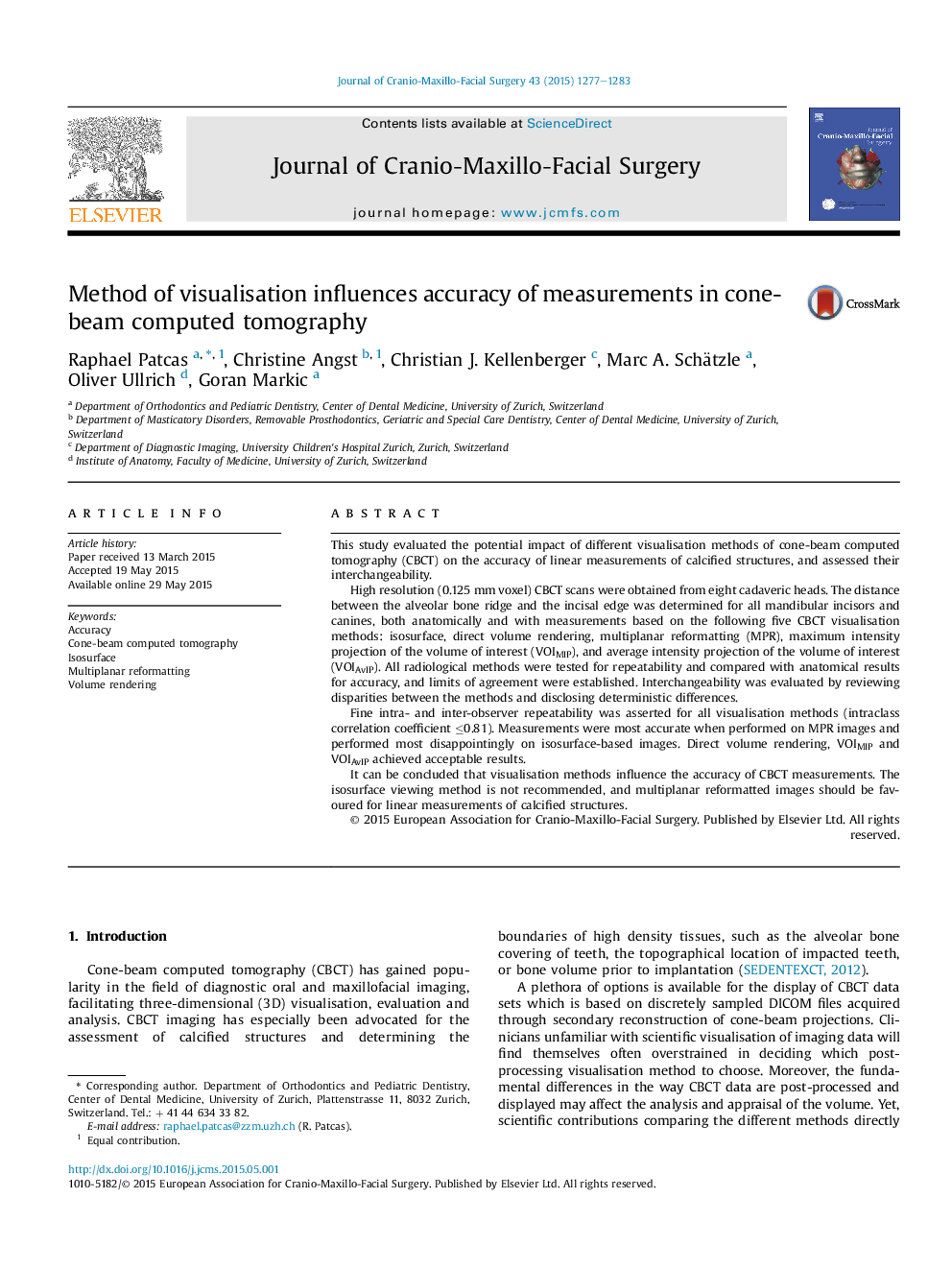| Article ID | Journal | Published Year | Pages | File Type |
|---|---|---|---|---|
| 3142374 | Journal of Cranio-Maxillofacial Surgery | 2015 | 7 Pages |
This study evaluated the potential impact of different visualisation methods of cone-beam computed tomography (CBCT) on the accuracy of linear measurements of calcified structures, and assessed their interchangeability.High resolution (0.125 mm voxel) CBCT scans were obtained from eight cadaveric heads. The distance between the alveolar bone ridge and the incisal edge was determined for all mandibular incisors and canines, both anatomically and with measurements based on the following five CBCT visualisation methods: isosurface, direct volume rendering, multiplanar reformatting (MPR), maximum intensity projection of the volume of interest (VOIMIP), and average intensity projection of the volume of interest (VOIAvIP). All radiological methods were tested for repeatability and compared with anatomical results for accuracy, and limits of agreement were established. Interchangeability was evaluated by reviewing disparities between the methods and disclosing deterministic differences.Fine intra- and inter-observer repeatability was asserted for all visualisation methods (intraclass correlation coefficient ≤0.81). Measurements were most accurate when performed on MPR images and performed most disappointingly on isosurface-based images. Direct volume rendering, VOIMIP and VOIAvIP achieved acceptable results.It can be concluded that visualisation methods influence the accuracy of CBCT measurements. The isosurface viewing method is not recommended, and multiplanar reformatted images should be favoured for linear measurements of calcified structures.
